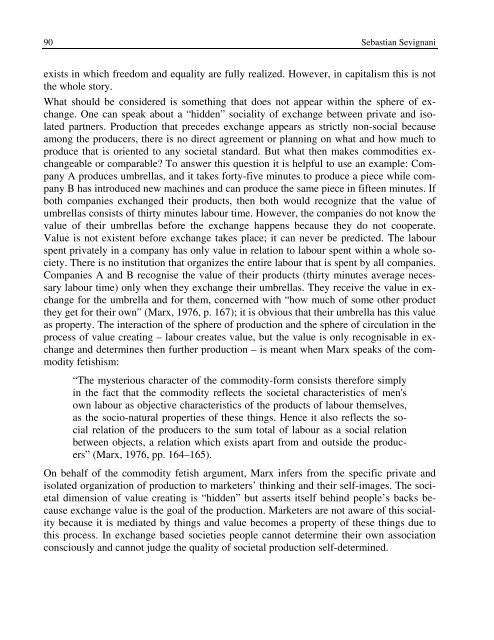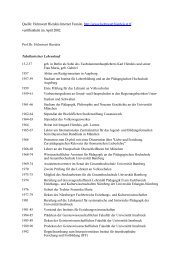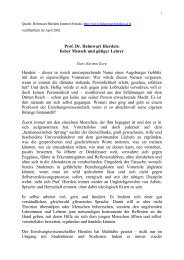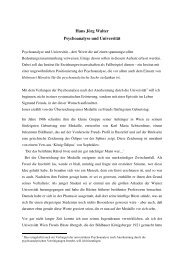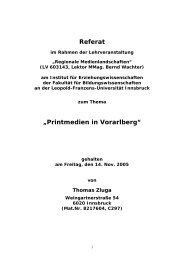Download pdf - Universität Innsbruck
Download pdf - Universität Innsbruck
Download pdf - Universität Innsbruck
Sie wollen auch ein ePaper? Erhöhen Sie die Reichweite Ihrer Titel.
YUMPU macht aus Druck-PDFs automatisch weboptimierte ePaper, die Google liebt.
90 Sebastian Sevignani<br />
exists in which freedom and equality are fully realized. However, in capitalism this is not<br />
the whole story.<br />
What should be considered is something that does not appear within the sphere of exchange.<br />
One can speak about a “hidden” sociality of exchange between private and isolated<br />
partners. Production that precedes exchange appears as strictly non-social because<br />
among the producers, there is no direct agreement or planning on what and how much to<br />
produce that is oriented to any societal standard. But what then makes commodities exchangeable<br />
or comparable? To answer this question it is helpful to use an example: Company<br />
A produces umbrellas, and it takes forty-five minutes to produce a piece while company<br />
B has introduced new machines and can produce the same piece in fifteen minutes. If<br />
both companies exchanged their products, then both would recognize that the value of<br />
umbrellas consists of thirty minutes labour time. However, the companies do not know the<br />
value of their umbrellas before the exchange happens because they do not cooperate.<br />
Value is not existent before exchange takes place; it can never be predicted. The labour<br />
spent privately in a company has only value in relation to labour spent within a whole society.<br />
There is no institution that organizes the entire labour that is spent by all companies.<br />
Companies A and B recognise the value of their products (thirty minutes average necessary<br />
labour time) only when they exchange their umbrellas. They receive the value in exchange<br />
for the umbrella and for them, concerned with “how much of some other product<br />
they get for their own” (Marx, 1976, p. 167); it is obvious that their umbrella has this value<br />
as property. The interaction of the sphere of production and the sphere of circulation in the<br />
process of value creating – labour creates value, but the value is only recognisable in exchange<br />
and determines then further production – is meant when Marx speaks of the commodity<br />
fetishism:<br />
“The mysterious character of the commodity-form consists therefore simply<br />
in the fact that the commodity reflects the societal characteristics of men's<br />
own labour as objective characteristics of the products of labour themselves,<br />
as the socio-natural properties of these things. Hence it also reflects the social<br />
relation of the producers to the sum total of labour as a social relation<br />
between objects, a relation which exists apart from and outside the producers”<br />
(Marx, 1976, pp. 164–165).<br />
On behalf of the commodity fetish argument, Marx infers from the specific private and<br />
isolated organization of production to marketers’ thinking and their self-images. The societal<br />
dimension of value creating is “hidden” but asserts itself behind people’s backs because<br />
exchange value is the goal of the production. Marketers are not aware of this sociality<br />
because it is mediated by things and value becomes a property of these things due to<br />
this process. In exchange based societies people cannot determine their own association<br />
consciously and cannot judge the quality of societal production self-determined.


